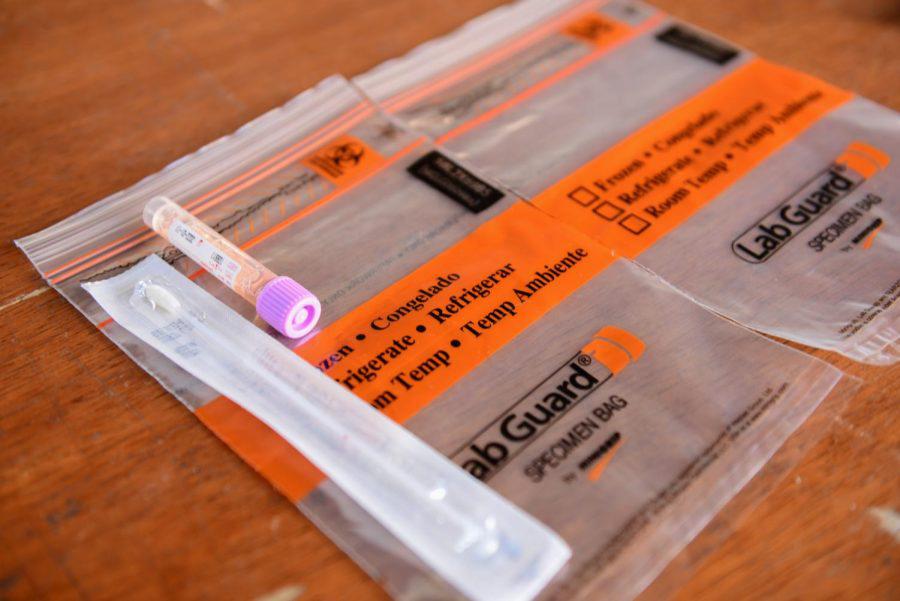Students report ignored dietary restrictions in Pitt’s quarantine housing
Wu Caiyi | Senior Staff Photographer
Dozens of students have entered Pitt’s quarantine and isolation housing.
September 30, 2020
For Emma Krapels, Pitt’s COVID-19 quarantine housing made her sicker than before she entered, but not from coronavirus. Krapels — who has celiac disease, an autoimmune disorder where eating gluten causes damage to the small intestine — said she suspects she was given gluten on Sept. 17 while in the housing, causing her to “vomit profusely.”
“I was so weak for like four or five days. I just started feeling better today,” Krapels, a first-year nursing major, said. “It knocked me out. I just laid in bed.”
Krapels is one of the dozens of students who have entered Pitt’s quarantine and isolation housing. Krapels said she decided to go to Pitt’s quarantine housing after being directly exposed to someone with COVID-19 on Sept. 10, but did not test positive herself. She said she entered quarantine housing on Sept. 12 and left on Sept. 24.
While the University doesn’t disclose the location of the housing, both the quarantine and isolation housing are at the same facility on campus. They are differentiated based on Pitt’s definition of “quarantine” and “isolation.” Quarantine is used when someone was exposed to someone who tested positive for COVID-19, whereas isolation is when someone tested positive themselves.
Students who test positive for COVID-19 are required to enter isolation housing for 10 to 14 days or return home to isolate. Students who are directly exposed to someone who tested positive for COVID-19 are given the option of entering University quarantine housing for 10 to 14 days or remaining in their residence halls. According to University data, Pitt has 33 students in isolation housing as of Tuesday. Students in quarantine are not included in this total.
Krapels — who chose to enter the housing because she didn’t feel comfortable quarantining in her Nordenberg Hall dorm room — said she expects the gluten exposure was from a pasta dish.
Krapels said Pitt’s medical and housing staff couldn’t locate the source of the gluten, though, and reported her as displaying coronavirus symptoms. Students in the housing are delivered food twice per day. Breakfast for the following day is delivered with dinner.
“They couldn’t find the source of the gluten, but I said I only ate what you gave me. Then they said vomiting and nausea are both side effects of COVID-19,” Krapels said. “They sent me for another test, and I got another test, which was negative once again which means it was not COVID that was making me throw up, it was definitely gluten.”
Pitt spokesperson Pat McMahon said Pitt meets all dietary restrictions, and Panther Central’s staff work to address concerns.
“Special care is taken to ensure dietary needs and preferences are accommodated,” McMahon said. “Any student who has questions about their meals should contact Panther Central.”
Krapels’ story was not the only time a students’ dietary restrictions weren’t followed. Jessica Gondak, a first-year chemistry major, said even though she is vegetarian, she received three non-vegetarian meals throughout her 14-day isolation period, including shrimp scampi.
“The first two times, I was able to call one of the staff who regularly checks in with me and explain the situation, so they delivered a vegetarian meal after a bit,” Gondak said. “I would’ve done that again with the dinner I had, but I decided to just eat some leftover lunch instead.”
Gondak said the only time she ever leaves her room is to go pick up her meal from the apartment building’s lobby.
Though there have been mishaps with her meals, Gondak said most of the meals were better.
“I’ve had penne with marinara, Beyond sausage and roasted asparagus, and a lot of tofu dishes. They come with sides and a dessert,” Gondak said. “The food has been fine — I don’t have complaints other than when they give me something I can’t eat.”



